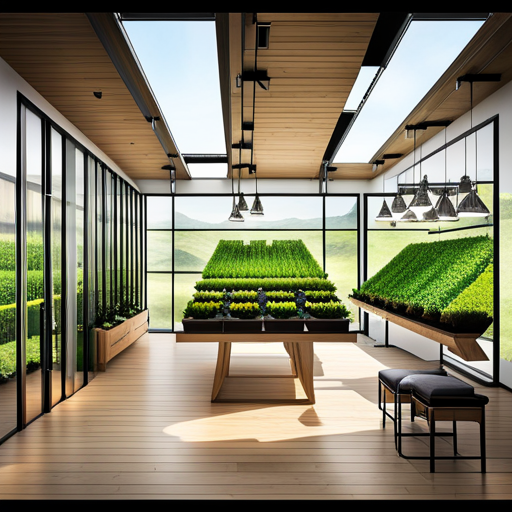 Loading... Please wait...
Loading... Please wait...Save Money. Grow Your Own!
Fast Plain Box Shipping.
We ship to the US & Canada.
888-493-7681
Grow Your Own!
Grow Your Own!
Hydroponics 101: A Beginner's Guide to Successful Indoor Gardening
Posted on 30th Oct 2023

Are you a plant enthusiast who dreams of having a lush garden, even in the confines of your own home? Look no further than hydroponics – the innovative solution to indoor gardening. Whether you have limited outdoor space or simply want to grow your plants all year round, hydroponics offers a convenient and efficient way to achieve your gardening goals.
What is Hydroponics?
Hydroponics is a method of growing plants without using soil. Instead, plants are cultivated in water combined with mineral nutrient solutions. This technique eliminates the need for traditional soil-based gardening, allowing you to grow a wide variety of plants in a controlled environment.
Why Choose Hydroponics?
There are several reasons why indoor gardeners opt for hydroponic systems. First and foremost, hydroponics enables you to grow plants in any location, regardless of climate or season. You can cultivate your favorite herbs, vegetables, or flower plants all year round, enjoying fresh produce even in the dead of winter.
Hydroponic systems also offer better control over plant growth conditions. With traditional gardening methods, soil quality, pH levels, and nutrient uptake can be challenging to manage. In hydroponics, you have complete control over all these factors. You can adjust the nutrient levels, pH, and even the light exposure to optimize plant growth and ensure a bountiful harvest.
Getting Started with Hydroponics
Now that you're aware of the benefits of hydroponics, it's time to start your own indoor garden setup. Here is a step-by-step guide to help you get started:
1. Choose the Right System: There are several hydroponic systems available, such as the nutrient film technique (NFT), deep water culture (DWC), and aeroponics. Research each system to find the one that suits your needs and available space.
2. Select the Ideal Plants: Determine the type of plants you want to grow. Leafy greens like lettuce and herbs are popular choices for beginners. They are easy to maintain and have a shorter growing cycle.
3. Set Up Your Grow Area: Find a suitable area in your home for your grow setup. Consider factors like access to electricity, water supply, and proper ventilation. Ensure the area has enough space for the hydroponic equipment, such as grow boxes, grow tents, grow lights, and nutrient reservoirs.
4. Provide Adequate Lighting: Plants need light to perform photosynthesis, and artificial grow lights are essential for indoor gardening. Led grow lights are energy-efficient and provide the optimal light spectrum for plant growth. Place the lights at the appropriate height to prevent heat damage to the plants.
5. Nutrient Solution and pH Management: Hydroponic plants depend on nutrient-rich water for proper growth. Follow the instructions provided with your hydroponic system to mix the nutrient solution. Ensure that the pH of the solution is within the desired range for your specific plants.
6. Monitor and Adjust: Regularly check the water levels, pH, and nutrient concentrations. Keep an eye out for signs of nutrient deficiencies or imbalances, such as yellowing leaves or stunted growth. Make adjustments as needed to maintain optimal growing conditions.
7. Harvest and Enjoy: After patiently nurturing your plants, the time will come to harvest your fresh produce. Pick your crops when they're ripe and ready to enjoy in your favorite recipes.
Conclusion
With hydroponics, you can transform any indoor space into a flourishing garden, growing plants with precision and convenience. By effectively managing the environment, nutrients, and lighting, you can create an ideal setting for your plants to thrive. And with the wide selection of top-quality hydroponic supplies available at Dealzer, you have everything you need to embark on your hydroponic gardening journey. So, why wait? Start your indoor garden today and reap the rewards of successful hydroponics!
